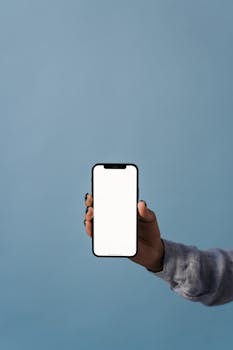Dark Mode vs Light Mode: Which UI Theme Should You Use?
9/25/2025 · User Experience · 6 min

TL;DR
- Dark mode reduces screen brightness and can extend battery life on OLED displays.
- Light mode is usually better for readability in bright environments and for print fidelity.
- For prolonged reading, contrast and font rendering matter more than theme.
- Accessibility and user preference should be primary drivers. Offer both and let users choose or follow system settings.
Why the debate matters
Both themes change perceived contrast, glare, and mood. Designers and engineers argue about which is more legible, which causes less eye strain, and which saves power. The right choice depends on device type, ambient light, content, and user needs.
Readability and contrast
- Light mode: dark text on light background usually gives the best legibility for long passages of text because it matches paper reading habits and keeps character edges crisp.
- Dark mode: light text on dark background can look sharp for short UI elements and code editors, but large blocks of white-on-black text may cause halation where glyph edges seem to bloom.
- Tip: aim for sufficient contrast without pushing pure black or pure white extremes. Use readable font sizes and adjust line height for long form content.
Eye strain, focus, and comfort
- Bright environments: light mode reduces squinting and makes content easier to scan.
- Low light: dark mode lowers overall screen luminance and can reduce glare and discomfort.
- Circadian impact: bright blue-heavy screens at night can disrupt sleep. Using dark mode or a warm color temperature in the evening can help.
Battery and performance impact
- OLED screens: dark themes can save battery because pixels are individually powered and true black pixels draw no power. Savings vary by content, often substantial for mostly dark UIs.
- LCD screens: backlight is constant, so battery savings from theme changes are negligible.
- Practical takeaway: only rely on theme for power savings if your audience uses OLED devices and the UI frequently displays large dark areas.
Accessibility and readability for diverse users
- Contrast ratios matter more than theme choice. Ensure text meets WCAG contrast guidelines for all themes.
- Some users with certain visual impairments prefer high contrast light mode; others find reduced luminance in dark mode easier.
- Provide user controls for text size, spacing, and theme. Do not force a theme on users who need the opposite for accessibility reasons.
Content type and context
- Longform reading and documentation: prefer light mode or a soft background color that mimics paper to avoid halation.
- Code editors, dashboards, and creative tools: dark mode is popular because it reduces distraction and makes color accents stand out.
- Media consumption: consider media type. Video and images often look richer against darker chrome, while text overlays may need careful contrast checks.
Ambient light and environment rules of thumb
- Outdoors or brightly lit spaces: light mode for legibility.
- Dim rooms or night use: dark mode to reduce glare and minimize sleep disruption.
- Shared displays and presentations: use the theme that ensures visibility for the largest audience and avoids washed out content.
Implementation and design tips
- Offer both themes and respect system preference settings so users get a consistent experience across apps.
- Avoid pure black for large surfaces unless you need the deepest black for battery saving on OLED. Consider very dark gray to reduce contrast shock.
- Maintain consistent color semantics across themes so red still means error and green still means success. Use accessible contrast for icons and text.
- Test color combinations with color blindness simulators and on real devices under different lighting conditions.
Testing and user settings
- Provide an easy toggle and a follow system option. Persist user choice across sessions.
- Include quick access to contrast and font size settings for users who need adjustments.
- Measure engagement and error rates by theme if analytics allow, but protect privacy and avoid tracking sensitive usage patterns.
Which should you choose?
- Offer both: the most user friendly solution is to provide both dark and light themes and remember the user choice.
- Default choice: follow the system theme on desktop and mobile so apps match user expectations.
- If you must pick one default for a web product, light mode is safest for broad readability, unless your product is centered around media consumption or code and designer workflows where dark mode is preferred.
Quick checklist for designers and developers
- Provide both themes and a system follow option.
- Ensure WCAG contrast compliance for both themes.
- Avoid pure black on large surfaces unless targeting OLED battery benefits.
- Include user controls for text size and color contrast.
- Test in multiple ambient light scenarios and on both OLED and LCD devices.
Bottom line
Dark mode is great for low light, creative tools, and potential OLED battery savings. Light mode remains the most reliable choice for readability and broad accessibility in bright environments. The best approach is to support both and make switching seamless so users can pick what works best for them.
Found this helpful? Check our curated picks on the home page.